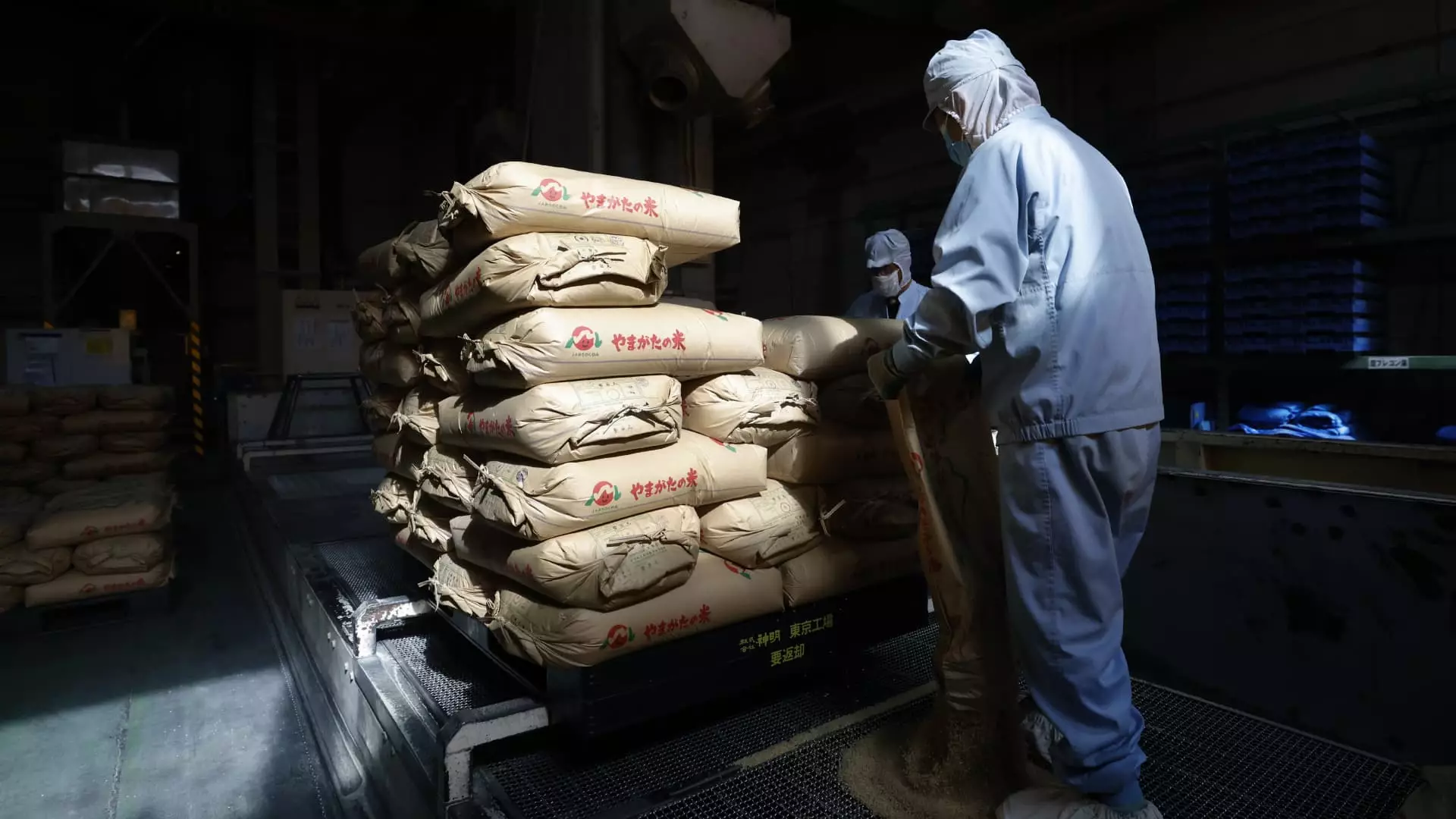In a shocking twist for a nation whose cultural fabric is woven around its rice consumption, Japan faces a staggering rise in rice prices, with figures leaping by over 101% in May alone. This remarkable increase not only strikes fear into the hearts of consumers but also poses significant implications for the economy at large. While the government attempts to stabilize the situation by releasing emergency stockpiles, the question remains: how did we arrive at this point, and what are the economic implications of such a rapid escalation?
The Inflationary Spiral
Breaking down the numbers reveals a troubling trend. March saw rice prices soaring by 92.1%, followed by April’s already alarming 98.4%. These staggering figures collectively portray a bleak scenario for everyday consumers who are now grappling with inflated costs at the supermarket. With core inflation reaching 3.7% in May — the highest since January — this spike illustrates how intertwined food prices are with broader economic indicators. Economic analysts like Marcella Chow from JP Morgan Asset Management have pinpointed rice as a significant driver of core inflation in Japan, accounting for nearly half of its impact. The government must strategize effectively to cushion this inflationary blow, as failing to do so could spiral into consumer resentment and spending hurdles.
Political Repercussions: An Erosion of Trust
The rice price crisis exemplifies not just an economic concern but a political one. Citizens look to their government for stability, especially concerning essential commodities. As prices rise, the trust in public institutions could wane, leading to a dissatisfaction that may reverberate through future elections. The central bank’s inaction or ill-fated policies could create the impression that they are disconnected from the realities faced by ordinary people. Given the rising geopolitical tensions worldwide and their potential impact on energy prices, the stakes are higher than ever. Are policymakers equipped to manage this ticking time bomb of rising costs?
Households on the Brink: The Psychological Impact
As rice prices continue their relentless ascent, household budgets across Japan are increasingly strained. This is not merely a statistical increase; it represents a burgeoning psychological burden on families who now have to make tough choices regarding their food purchases. The potential boost in household spending, as noted by Chow, hinges on whether price reductions can penetrate processed food markets and restaurants. However, the experience of tightening budgets and rising costs casts a long shadow over any optimistic forecasts. For many Japanese families, rice forms the heart of their diet, and the inability to afford this staple in coming months could lead to more severe dietary repercussions.
Economic Growth: The Elusive Goal
Adding another layer of complexity, Japan’s GDP has contracted by 0.2% as of March, a marker of economic fragility. This shrinks the optimistic narrative regarding potential growth, highlighting how interlinked inflation and economic output genuinely are. Inflation, particularly in essential items, undermines consumer confidence and hampers discretionary spending—the lifeblood of economic expansion. If households choose to cut back on spending not just on rice but across various sectors, businesses may start slumping, further influencing the economy’s sluggish trajectory. Central bank Governor Kazuo Ueda has asserted the need for rate increases, but the timing remains contentious at best.
The Bigger Picture: Global Implications
While Japan’s economic predicament may seem isolated, its ripple effects could impact global food security. As a leading player in the rice market, shifts in Japan’s consumption patterns could influence production and pricing strategies worldwide. The interdependence of global markets means that instability in one region can provoke shockwaves in others, affecting everything from shipping costs to agricultural policies in rice-producing countries. If consumers adapt to changing prices by reducing rice consumption, the repercussions will be felt far outside Japan’s borders.
It is clear that the burgeoning rice price crisis is far from just a simple economic statistic; it is a pressing issue that intertwines with social, political, and global dimensions. The way Japan addresses this formidable challenge will set the tone for both its immediate future and the nuanced fabric of its economic landscape. Will the measures taken halt the surge, or are we looking at an ineffable crisis that leaves a lasting scar on Japan’s economy?


Leave a Reply